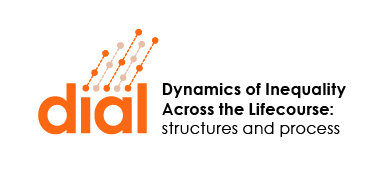This paper suggests that extensive Nordic family friendly policies designed to support work – family balance and to increase social and gender equality do not achieve the aim of minimising earnings inequalities between men and women and between different family types.
Using Finnish register data on 6,621 men and 6,330 women born between 1969 and 1970, the researchers looked at earnings at around age 40 and accumulated earnings from age 18-39.
They created seven different family types:
1. Late marriage, 2+ children (16%)
2. Marriage, <2 children (11%)
3. Early marriage, 2+ children (19%)
4. Childless serial cohabitors (10%)
5. Cohabiting parents (12%)
6. Unpartnered parents (9%)
7. (Almost) never-partnered childless (23%)
The first three family life course types involving stable marriage and parenthood were associated with higher mid-life earnings and the differences were much larger for men than for women.
Women also benefited from marriage and parenthood, but not to the same extent as men. Their earnings were higher than those of unmarried mothers and childless women, but mainly where they had children and a long marriage. But overall earnings differences between women were much smaller regardless of their family lives.
The researchers find that when it comes to earnings, men profit much from being married and having children than women.
Another key finding was a large group of never partnered childless men (one in five) who had lower mid-life earnings.
Through its system of benefits and parental leave rights, the Finnish welfare state has rewarded the combination of marriage, motherhood, and gainful employment more generously than most countries. However, this appears to have done little to address the earnings disparity between married fathers and married mothers.
Although mothers may take longer family leave, leading to lower accumulated earnings, this does not explain the large difference in earnings between men and women at near age 40, when employment rates are the same and when both women and men tend to work full-time. Neither does education play a major role, because, on average, women in Finland are higher educated.
To better understand accumulated disadvantage it is essential to compare women’s situations with men’s, rather than simply comparing mothers with childless women, which has tended to be the focus of research to date. The surprisingly large group of low earning never partnered childless men should be considered a social risk group by policy makers and researchers going forward, especially in the context of falling fertility rates in Finland.
Looking at how inequality develops within and across different family lives is key in terms of how we need to approach these problems going forward.
Read more at Discover Society: Do egalitarian Nordic family policies equalize earnings among men and women with different family lives?
